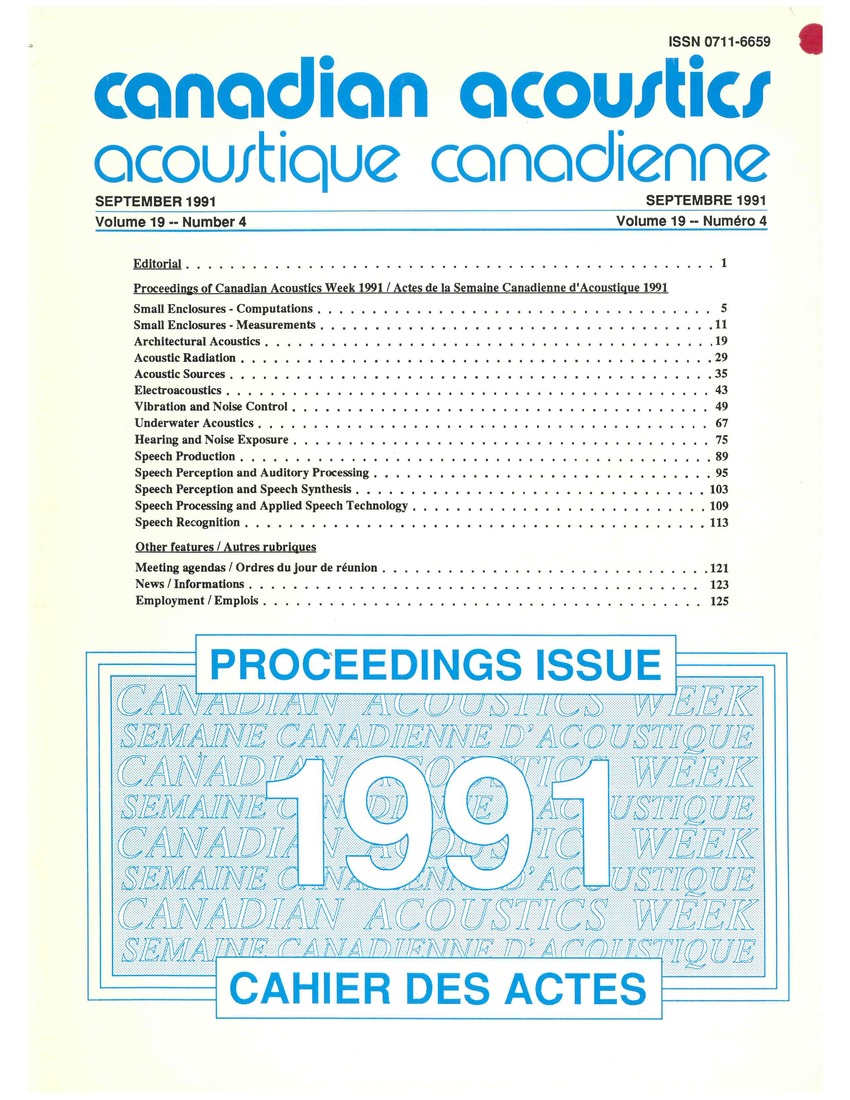Modern and ancient theatres, symphony halls, recording for large places-use of the Rasti index and initial reverberation time to analyze architectural acoustics problems
Keywords:
acoustic variables measurement, architectural acoustics, reverberation, modern theatres, ancient theatres, symphony halls, Rasti index, initial reverberation time, architectural acoustics problems, impulse response, EDT-5, EDT-10, EDT-15, multi-purpose halls, amphitheatres, Louis Frechette Hall, Albert Rousseau Hall, Montreal Olympic Stadium, intelligibility, New Richmond Theatre, National Theater Institute of MontrealAbstract
A correlation between the Rasti index and the impulse response, namely the EDT-5, EDT-10 and EDT-15 dB is analysed, both in the laboratory and during experiments conducted in multi-purpose halls and in large amphitheatres equipped with sound reinforcement systems. The close relationship between the Rasti index and the EDT measurements is demonstrated. The authors also show the necessity to measure the EDTs at the same localization and with the same directivity as the normal hall sources for example, with the use of a powerful omnidirectional source in order to study the acoustical behavior of an orchestra shell (Louis Frechette Hall of the Grand theatre Quebec or the Albert Rousseau Hall) or with the measurement of impulse response through the sound system of a large amphitheatre (Montreal Olympic Stadium). In addition in providing a better understanding of the parameters governing the intelligibility, the proposed approach could be very helpful for the acoustical design of new and (to be) renovated halls (New Richmond Theatre, The National Theater Institute of Montreal)Additional Files
Published
How to Cite
Issue
Section
License
Author Licensing Addendum
This Licensing Addendum ("Addendum") is entered into between the undersigned Author(s) and Canadian Acoustics journal published by the Canadian Acoustical Association (hereinafter referred to as the "Publisher"). The Author(s) and the Publisher agree as follows:
-
Retained Rights: The Author(s) retain(s) the following rights:
- The right to reproduce, distribute, and publicly display the Work on the Author's personal website or the website of the Author's institution.
- The right to use the Work in the Author's teaching activities and presentations.
- The right to include the Work in a compilation for the Author's personal use, not for sale.
-
Grant of License: The Author(s) grant(s) to the Publisher a worldwide exclusive license to publish, reproduce, distribute, and display the Work in Canadian Acoustics and any other formats and media deemed appropriate by the Publisher.
-
Attribution: The Publisher agrees to include proper attribution to the Author(s) in all publications and reproductions of the Work.
-
No Conflict: This Addendum is intended to be in harmony with, and not in conflict with, the terms and conditions of the original agreement entered into between the Author(s) and the Publisher.
-
Copyright Clause: Copyright on articles is held by the Author(s). The corresponding Author has the right to grant on behalf of all Authors and does grant on behalf of all Authors, a worldwide exclusive license to the Publisher and its licensees in perpetuity, in all forms, formats, and media (whether known now or created in the future), including but not limited to the rights to publish, reproduce, distribute, display, store, translate, create adaptations, reprints, include within collections, and create summaries, extracts, and/or abstracts of the Contribution.


